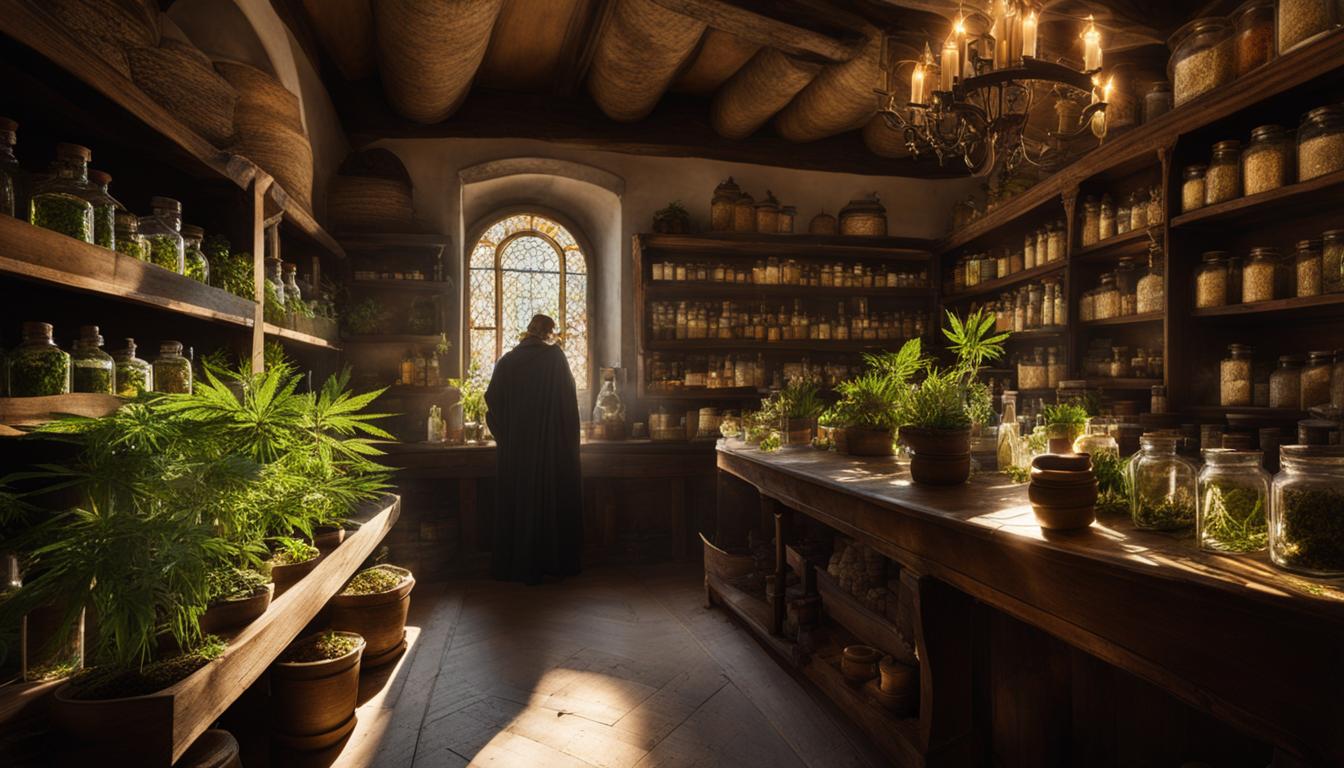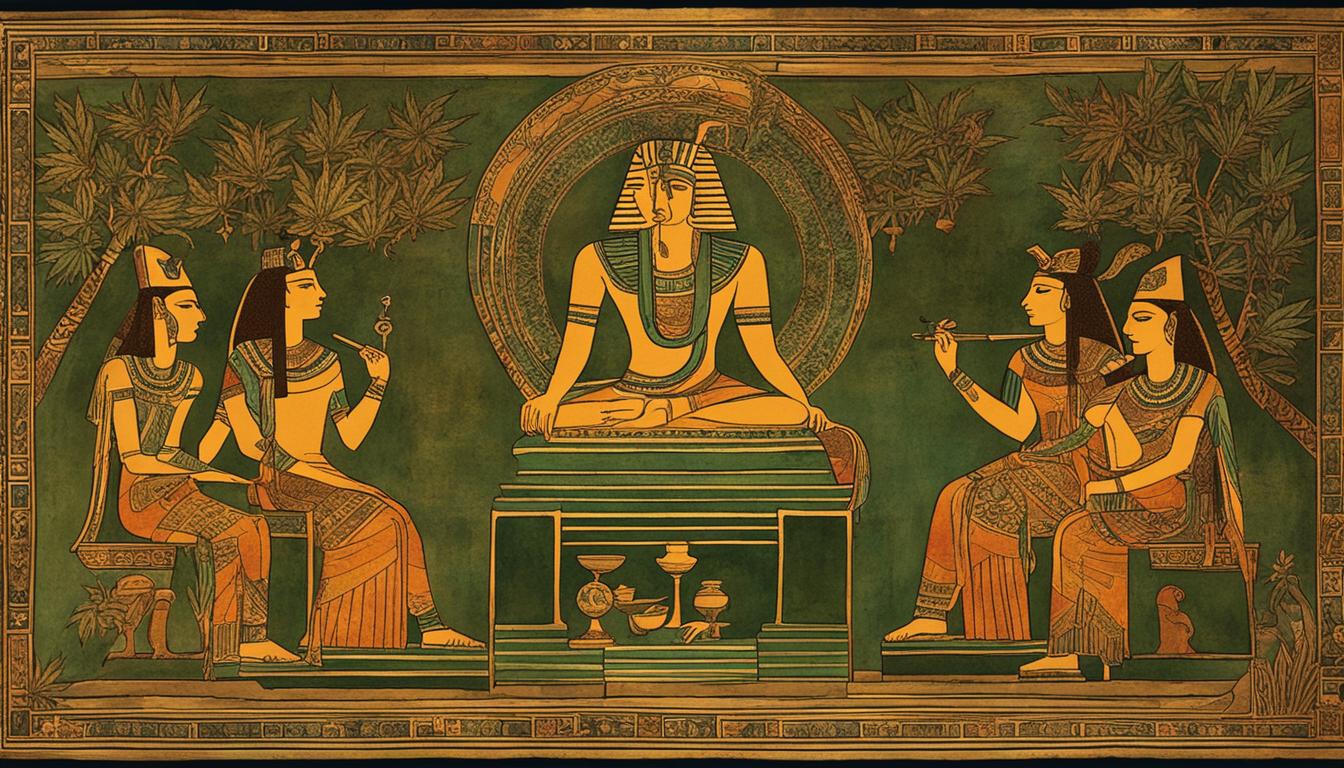How Did Cannabis Influence Medieval European Medicine and Science?
Discover the fascinating influence of cannabis on medieval European medicine and science. Throughout history, cannabis has played a significant role in alleviating various ailments and promoting scientific advancements. Join us as we delve into the historical use of cannabis in European medicine, its impact on scientific progression, and its integration into medieval European society.
Historical Use of Cannabis in European Medicine
The historical use of cannabis in European medicine dates back centuries and has left a lasting impact on the development of medicinal practices in medieval Europe. Ancient civilizations such as China, Egypt, and Greece recognized the therapeutic benefits of cannabis, using it to alleviate pain, nausea, anxiety, and other ailments. As trade routes expanded, Orientalists and Western physicians encountered Muslim and Indian cultures, where cannabis was already being used medicinally. This led to the introduction of cannabis as a remedy in European medicine.
Medicinal cannabis in medieval European society was well-documented and widespread. Physicians and herbalists of the time recognized the plant’s ability to relieve symptoms and improve overall well-being. It was commonly used to treat a variety of conditions, including pain, inflammation, digestive issues, and mental health disorders. The cultivation of cannabis for its medicinal properties became an integral part of medieval European society, with the plant being valued for its therapeutic potential.
“The historical use of cannabis in European medicine is a testament to the plant’s healing properties. From ancient civilizations to medieval Europe, cannabis has played a significant role in alleviating various ailments and improving the well-being of individuals.”
The medicinal use of cannabis in medieval Europe extended beyond its physical benefits. The psychoactive properties of cannabis were also recognized and utilized for cultural and recreational purposes. Individuals of high social status, such as shamans, consumed cannabis for its euphoric effects. Cannabis became intertwined with religious and spiritual practices, further solidifying its importance in medieval European society.

The historical use of cannabis in European medicine and its integration into medieval European society provide valuable insights into the development of medicinal practices during that time. As we delve deeper into the impact of cannabis on scientific advancement and its cultural significance, we gain a greater appreciation for the rich history and diverse applications of this remarkable plant.
The Impact of Cannabis on Scientific Advancement
Cannabis, with its medicinal properties, had a significant impact on scientific advancement in medieval Europe. The exploration of cannabis as a medicinal plant likely contributed to the understanding of its therapeutic properties and laid the foundation for future scientific breakthroughs. One notable discovery in the 20th century was the identification of the endocannabinoid system (ECS). This breakthrough in understanding the structure and properties of cannabis paved the way for further research into the ECS and its role in various physiological processes.
The exploration of the ECS has opened up new possibilities for medical research and treatment. Scientists have been able to study the interaction between cannabinoids and the ECS, leading to the development of pharmaceutical drugs that target specific receptors in the system. This has provided new avenues for treating conditions such as chronic pain, epilepsy, and multiple sclerosis.
The impact of cannabis on scientific advancement in medieval Europe cannot be overstated. The use of cannabis as a medicinal plant in this era likely facilitated the understanding of its therapeutic properties and contributed to the foundation of modern medical knowledge. From the discovery of the ECS to the development of pharmaceutical drugs, cannabis has played a crucial role in advancing scientific understanding and improving medical treatments.
The Impact of Cannabis on Scientific Advancement:
- The exploration of cannabis as a medicinal plant likely contributed to the understanding of its therapeutic properties.
- The discovery of the endocannabinoid system (ECS) in the 20th century led to further research and advancements in the field of medical science.
- Scientific studies on the interaction between cannabinoids and the ECS have resulted in the development of pharmaceutical drugs for various conditions.
- The impact of cannabis on scientific advancement in medieval Europe laid the foundation for modern medical knowledge and improved treatments.
Through its historical use in medicine and its impact on scientific advancement, cannabis has left a lasting legacy in medieval European society. Its influence continues to be felt in modern medical research and treatment. The exploration of the plant’s therapeutic properties and the discovery of the ECS have paved the way for new advancements in understanding and harnessing the potential of cannabis for the benefit of human health.
Cannabis in Medieval European Society
Cannabis played a multifaceted role in medieval European society, extending beyond its medicinal applications. Its usage was not limited to individuals seeking relief from ailments but also encompassed cultural and recreational dimensions. The plant was cultivated and consumed by individuals of high social status, such as shamans, who recognized its psychoactive effects. Cannabis was intertwined with religious and spiritual practices, adding to its significance in medieval European society.
The widespread usage of cannabis in various cultural contexts underscores its integration into the fabric of medieval European society. Individuals sought cannabis for its potential to induce euphoria and relaxation. Its recreational use provided an avenue for individuals to seek temporary respite from their daily routines and engage in leisure activities. The plant’s availability and consumption patterns reflect its popularity during this period, further solidifying its cultural and societal impact.
As the renowned explorer Marco Polo once said, “In Khorasan, the inhabitants consume a certain herb, which they carry about them wherever they go. By this means they are so intoxicated that they do not know what they are doing.” This quote exemplifies the recreational and psychoactive usage of cannabis in medieval European society.
The Role of Cannabis in Medieval European Society
Cannabis in medieval European society was not limited to medicinal or recreational use alone. It played a broader role in the social and cultural fabric of the time. The plant’s cultivation, consumption, and rituals surrounding its usage highlight its integration into the daily lives of individuals.
| Aspect | Impact |
|---|---|
| Religious and Spiritual Practices | The use of cannabis was intertwined with rituals and ceremonies, serving as a conduit for spiritual experiences and connections. |
| Social Status | Individuals of high social standing, such as shamans, were known to consume cannabis, further enhancing its significance in society. |
| Recreational Enjoyment | Cannabis provided individuals with a means of relaxation and temporary escape from the challenges of daily life. Its psychoactive effects offered a respite from the demands of medieval European society. |
The role of cannabis in medieval European society extends beyond its medicinal properties. Its integration into religious practices, association with social status, and recreational enjoyment highlight its cultural relevance during this era. Understanding these dimensions provides valuable insights into the societal impact of cannabis in medieval Europe.
The Global Expansion of Cannabis
The historical use of cannabis in European medicine and its impact on medieval European medicine and science cannot be fully understood without considering its global expansion. Cannabis, originating in Central Asia near the Altai Mountains, accompanied the migration of nomadic peoples and spread across different regions of the world. Its seeds were carried by explorers, traders, and conquerors, leading to the dissemination of cannabis and its usage in various cultures.
In China, Egypt, and Greece, cannabis was already being used medicinally before the Common Era. The plant was known for its pain-relieving, anti-inflammatory, and sedative properties. In medieval Europe, the introduction of cannabis by orientalists and Western physicians who encountered Muslim and Indian cultures further contributed to its medicinal usage. The global expansion of cannabis played an influential role in shaping its use in medieval European medicine and science.
The cultivation and usage of cannabis expanded as trade and colonialism grew. As it reached Africa, cannabis was integrated into local medical practices and cultural traditions. When the Americas were discovered and colonized, cannabis also found its way to these new territories. Its cultivation and usage continued to evolve, with different strains and preparations being developed to suit the needs of different populations.
“The historical use of cannabis in medicine demonstrates its global significance and enduring importance in different societies throughout the ages.”
The Role of Cannabis in Medieval European Medicine
In medieval Europe, cannabis had a significant impact on medicine and provided relief from various ailments. Its usage was well-documented and widespread, with physicians prescribing it for pain, nausea, and other symptoms. The exploration of cannabis as a medicinal plant likely contributed to the understanding of its therapeutic properties and laid the foundation for future scientific breakthroughs.
While the historical use of cannabis in European medicine might seem distant to us today, it is important to recognize its enduring legacy. The global expansion of cannabis brought this versatile plant to different corners of the world, where its medicinal properties were valued and utilized. By understanding the historical context and global reach of cannabis, we gain valuable insights into its influence on medieval European medicine and science.
Conclusion
The impact of cannabis on medieval European medicine and science cannot be underestimated. From its historical use in European medicine to its impact on scientific advancement, cannabis played a significant role in shaping the understanding of medicinal plants in medieval Europe.
With its reported ability to relieve symptoms of various ailments, cannabis provided much-needed relief to patients, especially those undergoing chemotherapy and suffering from chronic conditions. This therapeutic potential laid the foundation for further scientific exploration, ultimately leading to the discovery of the endocannabinoid system and its physiological processes.
Moreover, cannabis was not simply confined to medical use. It also had a cultural and recreational significance in medieval European society. The plant’s psychoactive effects were embraced by individuals of high social status as part of their religious and spiritual practices. Furthermore, recreational usage by those seeking euphoria and relaxation further integrated cannabis into the cultural fabric of the time.
The global expansion of cannabis played a crucial role in its influence on medieval medicine and science. As the plant spread across different regions through trade and colonialism, its usage and cultivation became more widespread. This global dissemination ensured that cannabis continued to shape the understanding and application of medicinal plants in medieval Europe.
FAQ
What is the historical use of cannabis in European medicine?
Cannabis has been used in European medicine since medieval times for its medicinal properties, including pain relief, reducing nausea and anxiety, improving appetite and sleep, and relaxing muscles.
How did cannabis influence scientific advancement in medieval Europe?
The study of cannabis in medieval Europe contributed to the discovery of the endocannabinoid system (ECS) in the 20th century, which led to further research on its physiological processes and therapeutic properties.
How was cannabis used in medieval European society?
Cannabis was not only used for medical purposes but also had cultural and recreational significance. It was consumed for its psychoactive effects and integrated into religious, spiritual, and recreational practices.
How did the global expansion of cannabis impact medieval European medicine?
As cannabis spread globally, it reached Europe and became widely used in medicinal practices. This global expansion further solidified its influence on medieval European medicine and science.
Did cannabis provide relief from various ailments in medieval European medicine?
Yes, cannabis was reported to alleviate symptoms such as nausea, vomiting, and wasting in patients undergoing medical treatments in medieval European medicine.
How did cannabis contribute to the understanding of the endocannabinoid system?
The historical use of cannabis in medieval Europe played a role in the discovery of the endocannabinoid system, which is involved in various physiological processes and has implications for medical research.














